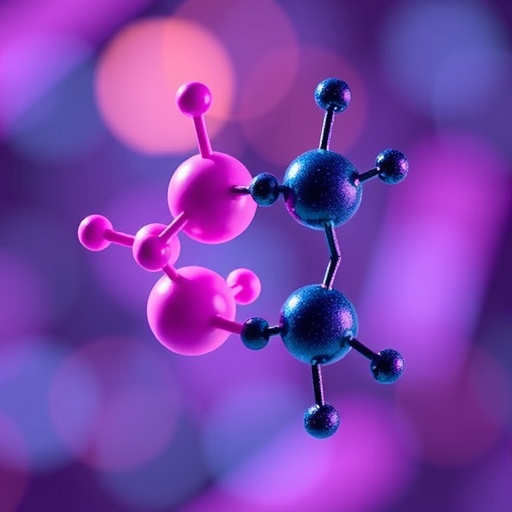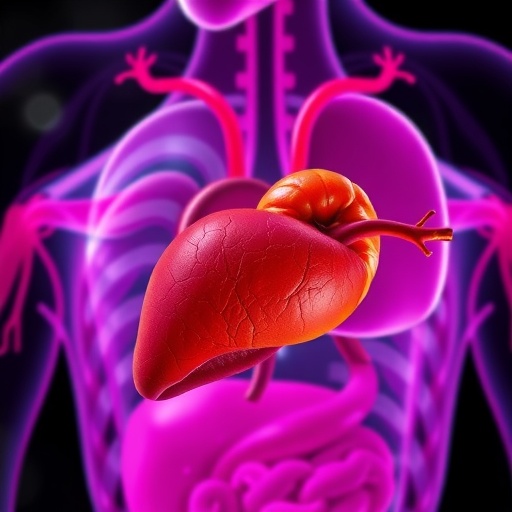
In recent scientific advancements, a remarkable area of exploration has emerged surrounding the versatile compounds known as porphyrins and metalloporphyrins. These complex organic molecules, characterized by their aromatic properties and coordination capabilities, are garnering significant attention in the realm of drug delivery systems. Researchers like Iqbal, Khaliq, and Mehdi have delved into the structural and functional attributes of porphyrins, elucidating how their unique properties can be harnessed for therapeutic applications. The potential of these compounds as drug carriers signals a transformative shift in the methodologies employed in medicinal chemistry.
Porphyrins are known for their ability to form stable complexes with metal ions, leading to the designation of metalloporphyrins. These metal-containing variants of porphyrins exhibit enhanced chemical stability and altered electronic properties, making them suitable candidates for pathways involving drug delivery. The intricate structural framework of porphyrins allows them to encapsulate various therapeutic agents and facilitate their transport across biological barriers, which is a critical challenge in modern medicine. The findings presented by the researchers indicate a promising horizon for employing porphyrin conjugates in targeted drug delivery systems.
One of the key aspects that make porphyrins particularly advantageous is their intrinsic photophysical properties. When exposed to light, porphyrins can undergo photochemical reactions that yield reactive species. This feature is not only significant for photodynamic therapy, a form of cancer treatment, but also suggests that porphyrins can be employed as a delivery mechanism that is activated selectively by light. The specificity of using light as an activation source minimizes damage to surrounding healthy tissues, which is vital in reducing side effects commonly associated with conventional chemotherapy.
Additionally, the research elucidates the ability of porphyrin and metalloporphyrin conjugates to interact with cellular receptors. By engineering these compounds to have specific functional groups, researchers can enhance their affinity for particular cellular targets, which allows for targeted drug delivery. This mechanistic approach not only enhances the efficacy of the drugs being delivered but also significantly reduces the necessary dosage, thereby mitigating potential systemic toxicity. The development of such tailored drug delivery systems is an exciting frontier in the battle against diseases like cancer and others that require precise therapeutic interventions.
Furthermore, the authors elaborate on the synthesis processes involved in producing porphyrin-based drug delivery systems. The versatility in synthetic approaches enables researchers to modify the porphyrin’s structure, thereby improving its bioavailability and therapeutic index. For instance, conjugation of porphyrins with various functional moieties can lead to significant improvements in solubility and stability in biological environments. These advancements are pivotal since poorly soluble compounds often fail in clinical settings due to inadequate absorption in the physiological system.
Another fascinating aspect of porphyrin conjugates is their potential application in diagnostics, particularly in imaging techniques. The ability of porphyrins to exhibit fluorescence provides an avenue for the visualization of biological processes. Using metalloporphyrins as contrast agents enhances the efficacy of imaging modalities such as magnetic resonance imaging (MRI) and fluorescence microscopy. This dual function—acting as both a therapeutic agent and an imaging probe—paints a promising picture for advancements in precision medicine and personalized therapy.
Moreover, the expansive exploration of porphyrins is not limited to their applications in drug delivery alone. The study reveals the potential of these compounds in various other domains, including catalysis and photovoltaic devices, broadening the scope of their utilization. Porphyrins are essential in mimicking the activity of natural enzymes due to their unique electronic properties, hence promoting innovative approaches in industrial catalysis. Their robustness in diverse chemical environments makes them suitable for refining processes, which could have far-reaching implications in sustainable chemistry.
As the scientific community continues to unlock the multifaceted capabilities of porphyrins and metalloporphyrins, collaborative efforts among chemists, biologists, and materials scientists become increasingly crucial. Such interdisciplinary projects can drive the integration of porphyrin-based systems into viable therapeutic applications. By optimizing the synthesis and functionalization of these compounds, researchers can establish robust protocols for drug delivery systems that are not only efficient but also reproducible on a larger scale.
The implications of these findings extend into the realm of cancer therapy, where the challenge of efficiently targeting tumor sites remains a significant hurdle. Traditional cancer treatments often fail to differentiate between malignant and healthy cells, leading to severe side effects. The ability of porphyrin-based systems to selectively target tumor cells while sparing normal tissues could revolutionize patient care by offering more effective and less toxic treatment options. This shift towards personalized medicine is essential for improving outcomes in oncology.
As the research unfolds, the implications of porphyrin and metalloporphyrin conjugates for drug delivery appear boundless. Integrating these compounds into the existing therapeutic framework presents an exciting opportunity for innovation. The exploration of their functionalities could lead to breakthroughs not only in treating cancer but also in managing a host of other diseases, emphasizing the importance of continuous research in this promising field.
In summary, the work of Iqbal, Khaliq, and Mehdi serves as a clarion call for further investigation into the potential of porphyrins and metalloporphyrins as advanced drug delivery platforms. The avenues explored in their research highlight not only the versatility and efficacy of these compounds but also the necessity for ongoing dialogue and collaboration within the scientific community. The future of drug delivery may well hinge on these colorful and complex molecules, paving the way for innovative therapies that define the next era in medicine.
Subject of Research: Porphyrin and Metalloporphyrin as Drug Delivery Systems
Article Title: Porphyrin/metalloporphyrin and their conjugates: a promising platform for drug delivery.
Article References:
Iqbal, D.N., Khaliq, S., Mehdi, M.Z. et al. Porphyrin/metalloporphyrin and their conjugates: a promising platform for drug delivery.
Mol Divers (2025). https://doi.org/10.1007/s11030-025-11289-1
Image Credits: AI Generated
DOI:
Keywords: Porphyrins, Metalloporphyrins, Drug Delivery, Photodynamic Therapy, Targeted Therapy, Cancer Treatment, Diagnostics, Interdisciplinary Research
Tags: advanced medicinal chemistrycoordination chemistry of porphyrinsdrug delivery challenges in modern medicineencapsulation of therapeutic agentsinnovative drug carrierslight-activated drug delivery systemsmetalloporphyrins in medicinephotophysical properties of porphyrinsporphyrin-based drug delivery systemsstructural attributes of porphyrinstargeted drug delivery solutionstherapeutic applications of porphyrins




